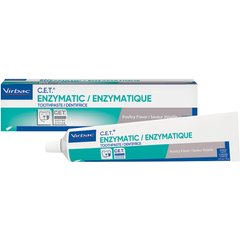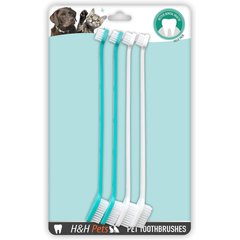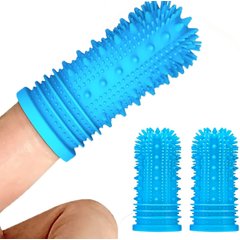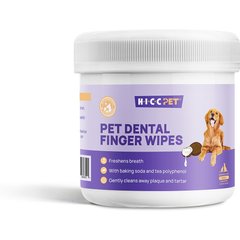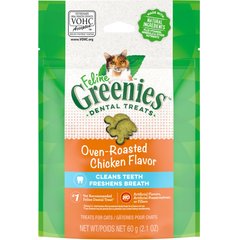What Is Dental Disease in Cats? Learn the Symptoms, Causes, and Treatment
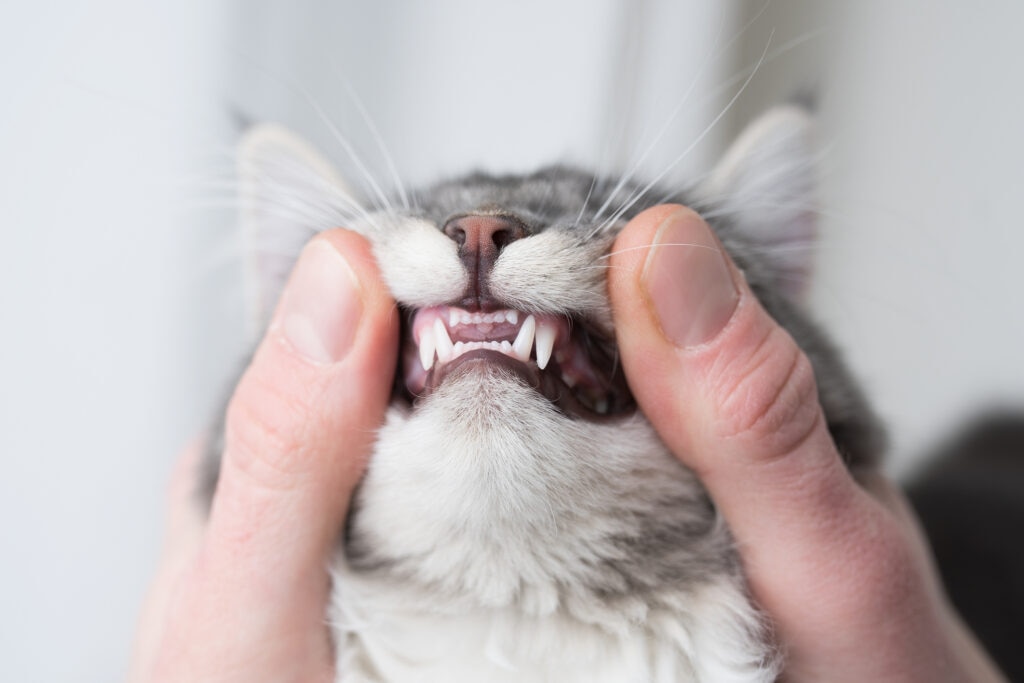
Photo by Nils Jacobi/iStock / Getty Images Plus via Getty Images
Cat dental care is easy to overlook, but caring for your kitty’s teeth is just as important as brushing their coat and trimming their nails.
That’s because, when left untreated, dental disease can worsen, cause severe pain, and lead to other serious health problems that affect more than a cat’s mouth.
But with the right care routine, dental disease in cats is preventable. Here’s what to know.
What Is Dental Disease in Cats?
Dental disease in cats is very common. So common, in fact, that an estimated 50–90% of all cats over 4 years old have a form of the condition, according to the Cornell Feline Health Center.
There are several diseases that can affect cat gums and teeth, the most common being gingivitis and periodontal disease.
Cats can also develop tooth resorption (a condition where the tooth’s structure breaks down over time) and stomatitis (which causes inflammation of the gums, throat, and mouth).
Cat Gingivitis vs. Periodontal Disease
Cat gingivitis and periodontal disease are different stages of the same disease.
Gingivitis is the first stage of periodontal disease, and it starts with “bacterial buildup under the gum line,” says Roxane H. MacLellan, DVM, DAVDC, a veterinary dentist in Highlands Ranch, Colorado.
“If [the gingivitis is] left to progress, it will cause attachment loss, meaning the tooth becomes loose,” explains Dr. MacLellan. This can then lead to more issues, like bone loss, root exposure, gum recession, and loss of the tooth.
Here are some major differences between gingivitis and periodontal disease in cats:
| Gingivitis | Periodontal Disease |
|---|---|
| Inflammation of the cat’s gums | Loss of tooth attachment and bone loss |
| Extremely common | Very common, especially in older cats |
| Is reversible with proper dental care | Is not reversible, but can be treated |
| Symptoms include inflamed gums, some bleeding from the gums | Symptoms may include inflamed gums, bad breath, loss of appetite or difficulty chewing, drooling, facial swelling |
| Treatment involves preventative care, such as dental cleanings, brushing at home, and dietary changes | Treatment can include a professional cleaning under anesthesia, oral surgery, and teeth extraction |
Stages of Dental Disease
Periodontal disease has four stages, each one based on the amount of bone attachment loss:
- Stage 1 (gingivitis): No attachment loss
- Stage 2: 25% attachment loss
- Stage 3: 25%–50% attachment loss
- Stage 4: Over 50% attachment loss
What Are the Signs of Dental Disease in Cats?
Catching feline gingivitis early on can prevent pain, complications, and hefty vet bills down the line. Unfortunately, felines are notoriously good at hiding their pain, and symptoms of cat dental disease are not always obvious.
Keep an eye out for the following subtle signs of dental disease:
- Red, swollen gums
- Bad breath
- Trouble eating
- Losing weight (from eating less)
- Excessive drooling
- Blood-tinged saliva
- Pawing at the mouth or shaking the head
The surest way to stay on top of your cat’s dental care is to take them in for annual exams, which will give your veterinarian a chance to look for progressing dental disease.
Your cat’s health relies on you and your vet catching early signs of dental disease, which can cause more than just pain, says Michael Kearley, DVM. Dental disease can also lead to tooth loss, a bone infection called osteomyelitis, or an infection that spreads through the bloodstream to other parts of their body.
“Kidney failure in cats has a super high incidence,” says Jennifer Redmon, DVM, founder of Pet Dental USA in Arizona. She says untreated dental disease can ultimately lead to kidney failure.
What Causes Dental Disease in Cats?
Some types of dental disease don’t have known causes. Experts think that stomatitis is an autoimmune disorder, one where the body fights against the bacteria and plaque in the mouth, but the exact cause isn’t 100% known. Tooth resorption may be genetic or triggered by inflammation from periodontal disease.
But the cause of gingivitis and periodontal disease in cats is much more straightforward.
“Normal bacteria that live in the mouth migrate to the tissues under the gum line,” says Emily Ward, DVM, DAVDC, a veterinary dentist in Cincinnati. “The resulting inflammation and infection cause loss of the support structure of the tooth.”
How Do Vets Diagnose Dental Disease in Cats?
The first step to diagnosing dental disease in your cat is an oral exam. Healthy feline gums will be a pale pink. Gums that are bright red or recessed indicate gum disease.
While an experienced vet can spot buildup and other signs through an oral exam, Dr. Ward says X-rays are necessary to determine the quality of remaining bone attachment and understand how advanced the disease is.
What Does Treatment for Dental Disease in Cats Look Like?
A cat’s dental disease treatment depends on how severe the case is.
For gingivitis, dental cleanings and at-home care will help reverse the symptoms and prevent the disease from becoming worse, says Dr. Kearley.
Advanced periodontal disease in cats is often treated with deep cleanings, oral surgery, local antibiotics, or tooth extraction.
Can I Prevent Dental Disease in My Cat?
The best thing for cat dental care is prevention—and this begins with regular checkups. The American Animal Hospital Association recommends all cats receive a full dental evaluation (including cleaning, polishing, and X-rays) by the time they’re 1 year old.
In addition to vet-performed cleanings, pet parents should build a routine of at-home care using products approved by the Veterinary Oral Health Council. Dr. Kearley recommends brushing your cat’s teeth every day with a cat-friendly flavored toothpaste and either a bristle brush or a finger toothbrush—whichever your kitty is OK with.
Recommended Products
While brushing teeth is the best way to keep dental disease at bay, there are other cat dental care products that can help, too.
HICC PET Finger Glove Dental Wipes and dental diets like the Hill’s Dental Care veterinary diet or over-the-counter Oral Care food, for example, can help prevent plaque and tartar in cats.
Many cats also love Feline Greenies, treats that are designed to reduce tartar buildup. You can also add water additives and dental supplements to your kitty’s food to help their teeth stay healthy.
Recommended Products
FAQs About Dental Disease in Cats
Can dental disease in cats be cured?
The first stage of periodontal disease, known as gingivitis, is the only curable dental disease in cats. Other types of dental disease can be managed but not cured.
How long can a cat live with periodontal disease?
Untreated periodontal disease isn’t fatal, but it can ultimately lead to serious medical conditions and pain. These can cause a cat to stop eating, reduce their quality of life, and even reduce their life expectancy. But with treatment and prevention, cats can live a normal, healthy lifespan.
What are the different types of dental diseases?
There are several types of dental diseases that affect cats. The most common are gingivitis, periodontal disease, and tooth resorption.
Attributions
This content was medically reviewed by Jo Cornett, DVM, Chewy veterinarian.
